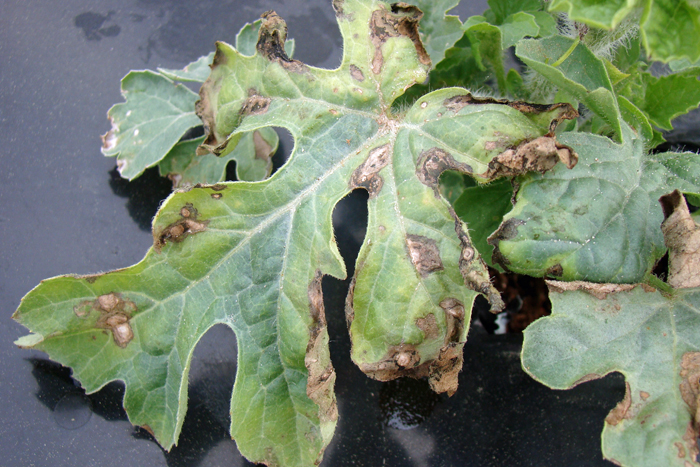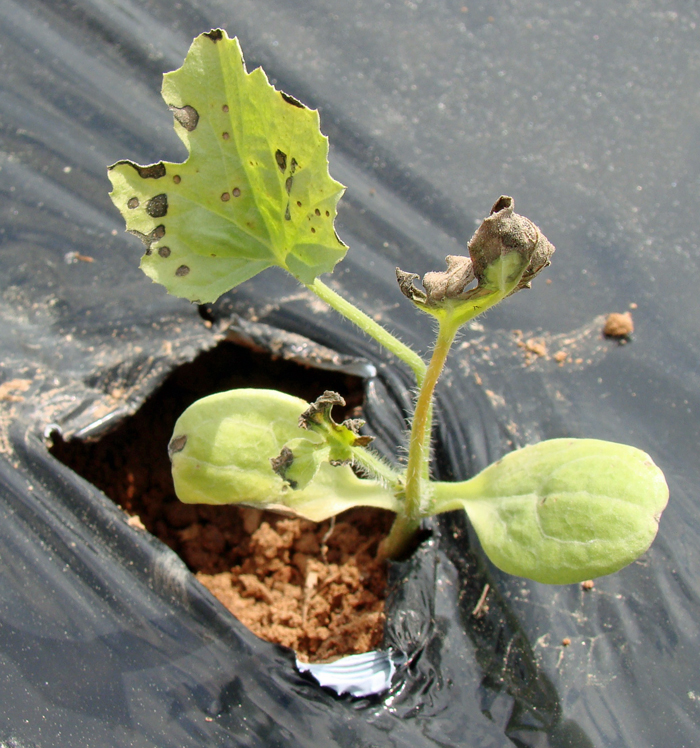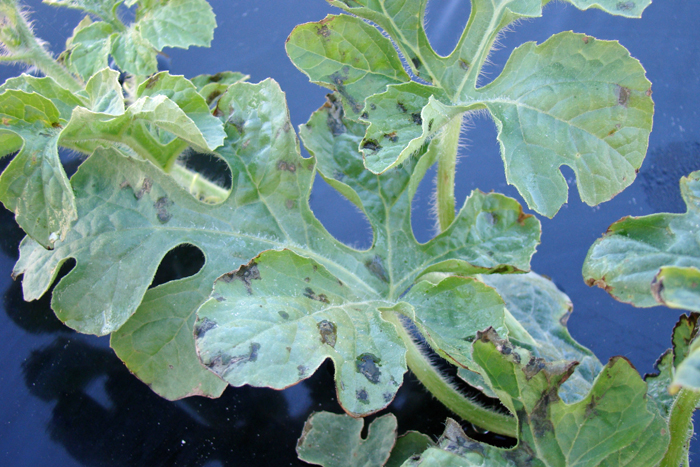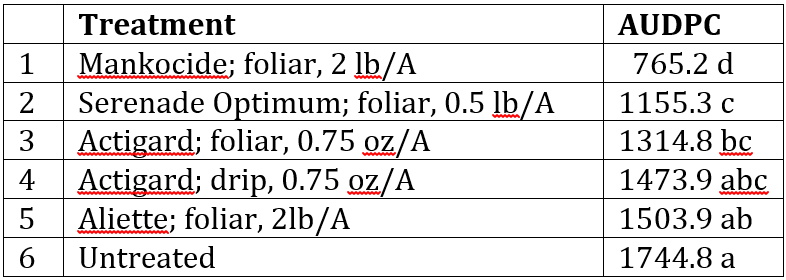
Pseudomonas Syringae Leaf Spot on Watermelon
Mathews Paret, Eric Newberry, Nick Dufault, Josh Freeman, Bob Hochmuth, Anthony Drew, David Langston and Jeff Jones
Florida and Georgia are the two largest producers of watermelon in the United States with 48,000 acres under production and a farm value of $267 million. These two states also produce squash in 11,300 acres with a value of $90 million. In spring 2013, a new disease on watermelon and squash was discovered in both states with symptoms of circular leaf lesions with black edge and white to tan centers leading to severe blighting (Fig.1). The symptoms can start early in the transplanting stage (Fig. 2) and coupled with cool weather and wet conditions can be a serious problem in watermelon production. Early stage symptoms on infected plants also include water soaking of the leaves (Fig. 3)


In 2013, this disease affected production of ~6,500 acres of watermelons in Florida, leading to severe infection at the early stages of the crop leading to leaf blighting, and transplant losses. The disease has continued to be a major problem in spring 2014 in watermelon and squash in Florida and Georgia. As a result, costs of bactericide applications have increased dramatically for growers.
In response to the 2013 and 2014 outbreaks, the Florida Watermelon Association and the Southern Integrated Pest Management Program (IPM) provided funding for research on preliminary characterization of the causal organism, and screening of materials for disease management on watermelon. This study confirmed that the causal agent was a plant-pathogenic bacterium, Pseudomonas syringae. Most of the strains were highly pathogenic on watermelon in greenhouse experiments. Currently there is no information on the seed-borne nature of these strains, or the specific environmental conditions required for disease outbreak. Watermelon field trials are currently being conducted by the University of Florida at two locations, Quincy and Citra, Florida, to test the effectiveness of acibenzolar S-methyl (Actigard), copper + ethylene bis dithiocarbamates (Mankocide), Bacillus subtilis (Serenade Optimum) and Aluminum tris (O-ethyl phosphonate) (Aliette) in disease management. The preliminary results of the first trial at Quincy, which is still ongoing, is provided below (Table 1). In this trial Mankocide significantly reduced disease compared to untreated and all other treatments. Foliar application of Actigard and Serenade Optimum also significantly reduced the disease compared to untreated plots. Our research team is planning to utilize the knowledge developed from the field trials into an effective IPM protocol for disease management on watermelon and squash by end of 2014.

 0
0
